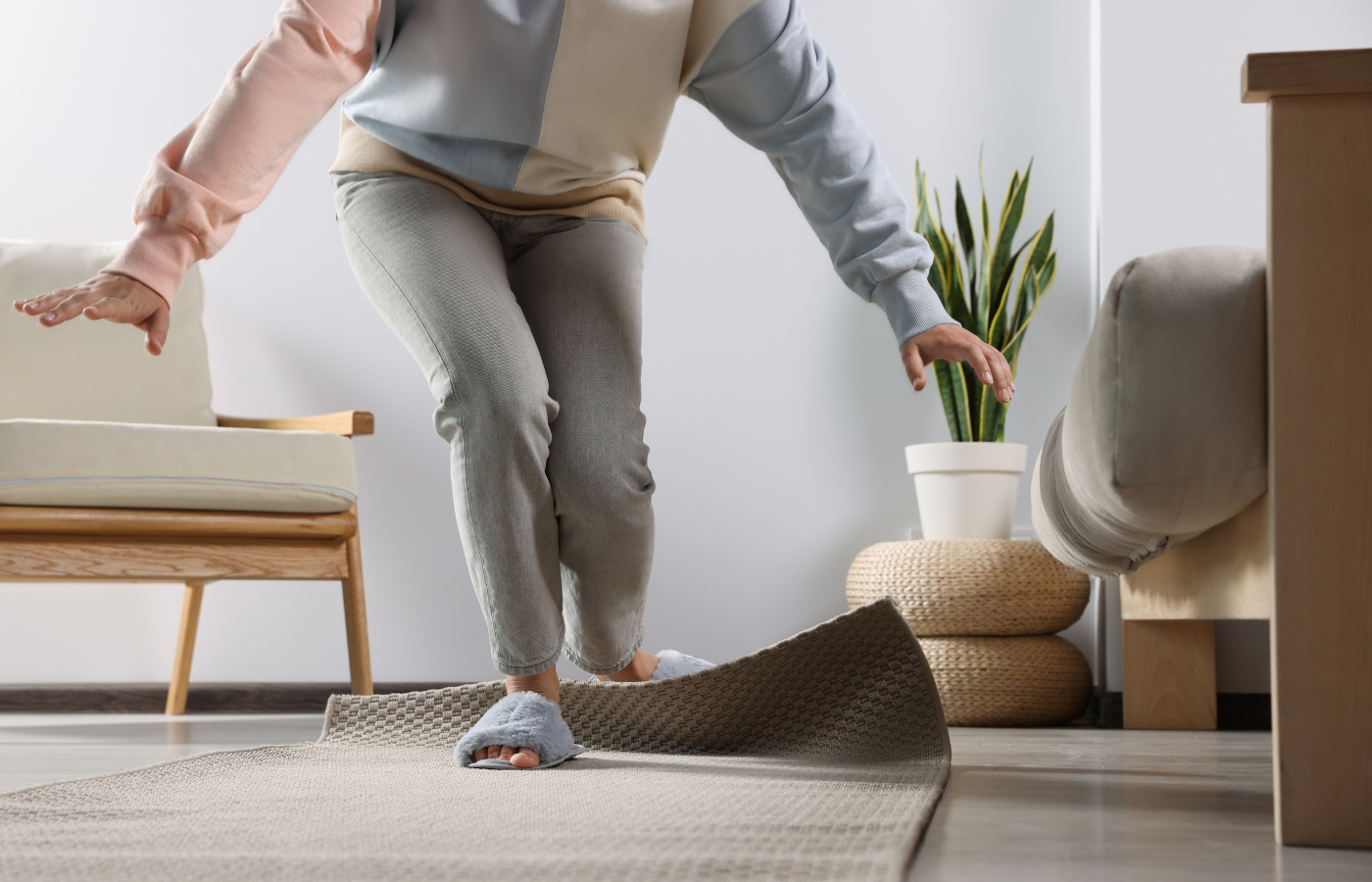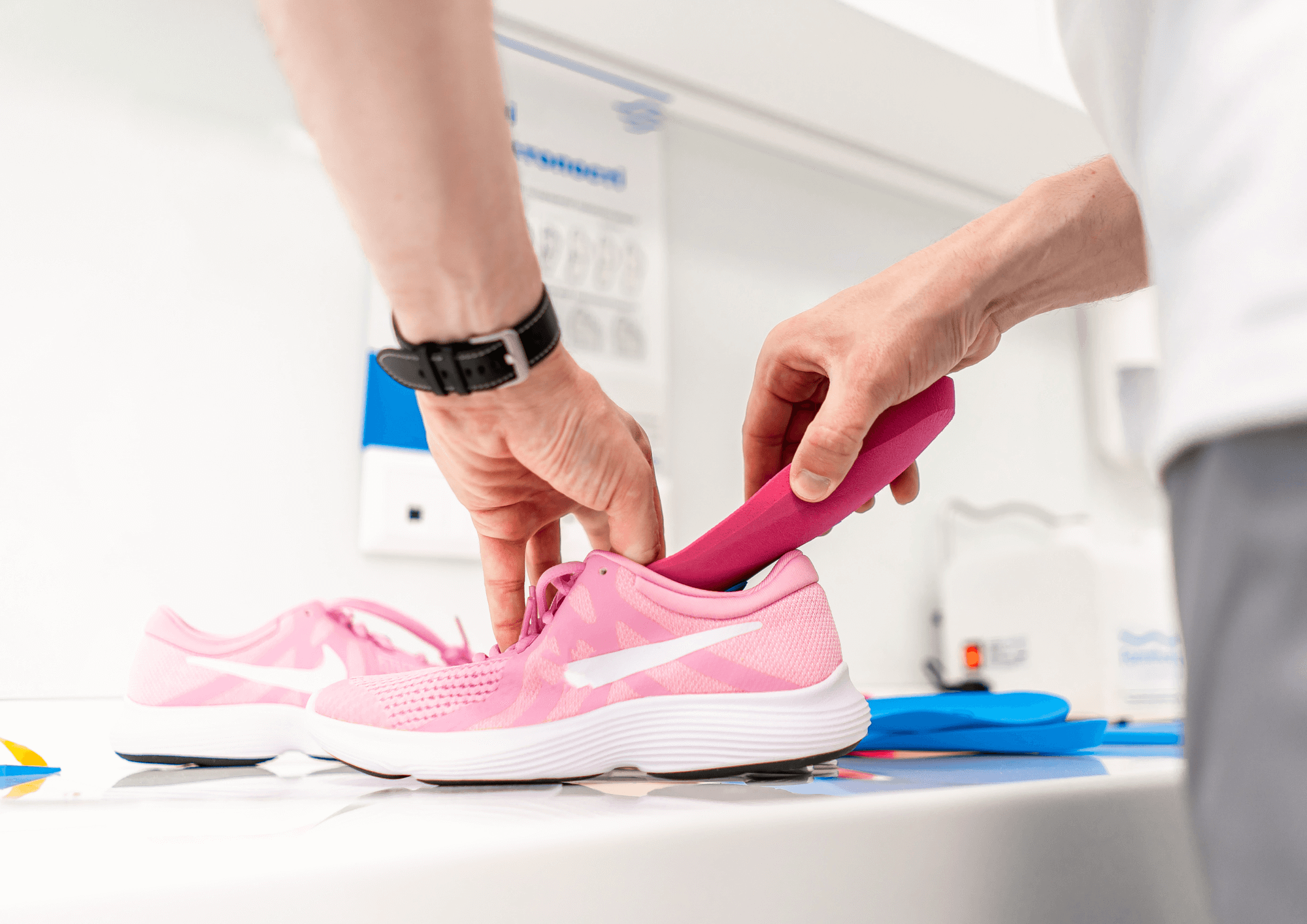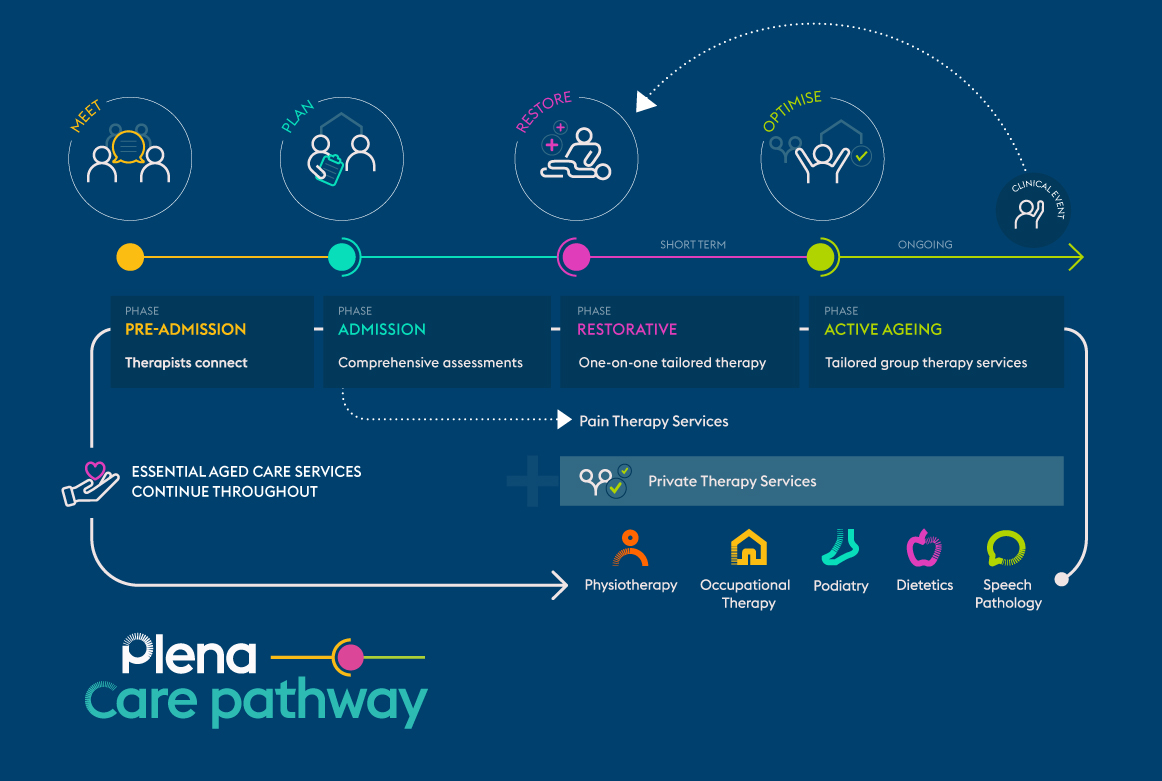In our modern age, where bustling lives often overshadow concerns about safety, there’s a prevalent yet often overlooked danger lurking in our homes: falls. These seemingly mundane accidents can have devastating consequences, particularly for older adults.
According to the Australian Institute of Health and Welfare, people over the age of 65 are more likely to be hospitalised or die from a fall compared with other life stages. But falls need not be an inevitable part of ageing, and there are many things we can do to reduce our risk.
According to Plena Community Occupational Therapist Laine Harris, 30-40% of her clients have experienced a fall in the past 12 months and are seeking support to recover and make their homes a safer environment to prevent subsequent falls.
“Older people are at high risk for falls due to lower bone density, reduced muscle tone, and conditions affecting balance and eyesight” advises Laine. “These factors not only impact on a person’s tendency to fall, but also affect ones ability to recover from a fall”.
Older people recover more slowly from injuries like hip fractures, and are more vulnerable to post operative and best rest complications. Another risk factor is what healthcare professionals refer to as “The Long Lie” – that is time spent immobilised on the floor after a fall. If an individual falls and remains on the floor for longer than 60 minutes, this can be a marker of other risk factors like weakness and illness. It is also an indicator that an individual may be experiencing social isolation, associated with higher mortality rates, and may need increased care services.
Occupational Therapists are specially trained in identifying and addressing fall risk factors in an individual’s home, and Laine shares her top tips on how to make your home a safe environment.
Home Modifications
- Eliminate hazards in your home such as loose rugs, slippery surfaces and poor lighting to reduce the risk of falls.
- Make modifications when a hazard cannot be removed – tape down mats and rugs or install brightly coloured or high contrast options for improved visibility.
- Install grab bars, handrails, non-slip maps and shower chairs or stools to enhance stability and safety, especially in high-risk areas like bathrooms.
- Wear supportive, well-fitting, non-skid footwear indoors and outdoors to prevent slips and trips.
- Implement sensor pads and devices to alert carers if an older person gets up out of a bed or chair without assistance.
- Install a lowered bed to minimise the risk of a fall, and consider the use of urinal bottles or bedside commodes to remove the need to walk to the bathroom in the night, which is when falls are particularly prevalent.
A common but less understood side effect of falls is what is called “Post fall syndrome”, where an individual has long term health impacts and limitations because of a fall.
“If an individual has experienced a fall and ‘long lie’ they may suffer from muscle damage, pneumonia, pressure sores, dehydration or hypothermia” explains Laine. “These long-term conditions can contribute to a loss of confidence and increased fear of falling again. The psycho-social consequences can mean a person may restrict their own movements and activities out of fear, reducing their quality of life and independence” she continues.
The long-term impacts of a fall are also a significant factor in older people needing to enter residential aged care, which can further impair independence.
Laine says there are many things we can do to reduce our risk of falls in general, including;
- Engage in regular exercise programs to improve strength, balance and flexibility, thus reducing the likelihood of falls.
- Be aware of medications that may cause dizziness or drowsiness and consult healthcare professionals for adjustments if necessary.
- Use mobility aids like walking sticks or frames consistently, especially indoors.
- Seek the expertise of allied health professionals like Occupational Therapists and Physiotherapists for comprehensive assessments and personalised fall prevention strategies.
- Stay proactive. Maintain overall health and fitness through regular physical activity, proper nutrition, and social engagement to reduce the risk of falls.
Plena Occupational Therapists take a multi-disciplinary approach to client care, acknowledging that falls prevention has a broad scope within the allied health industry.
- A dietitian can ensure a client’s nutrition is adequate, to maintain strength and muscle mass.
- A podiatrist can assess a client’s foot health to ensure safe mobility, and prescribe appropriate footwear to improve gait, steadiness and grip.
- A physiotherapist can identify weaknesses in movement which may contribute to falls, and program strengthening exercises to regain safe mobility.



